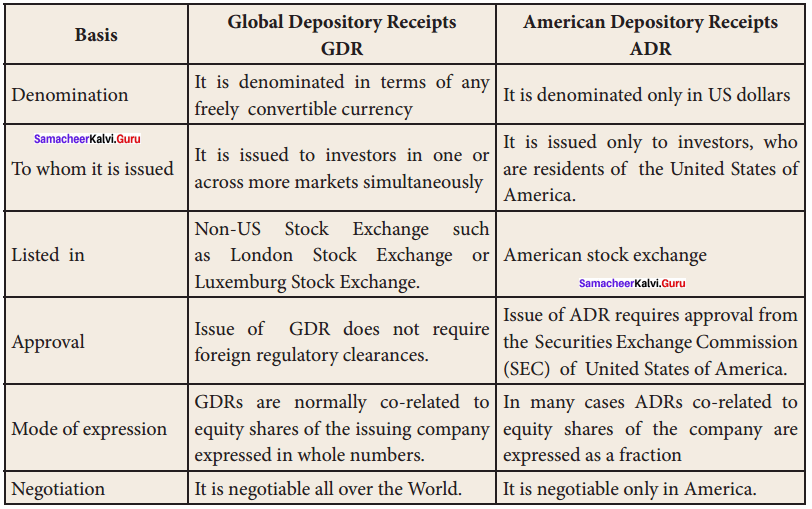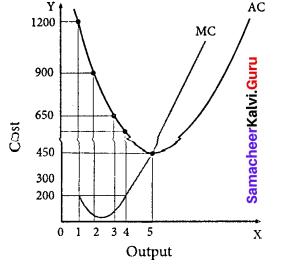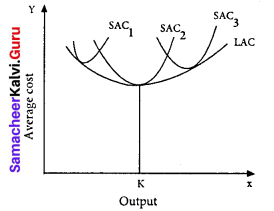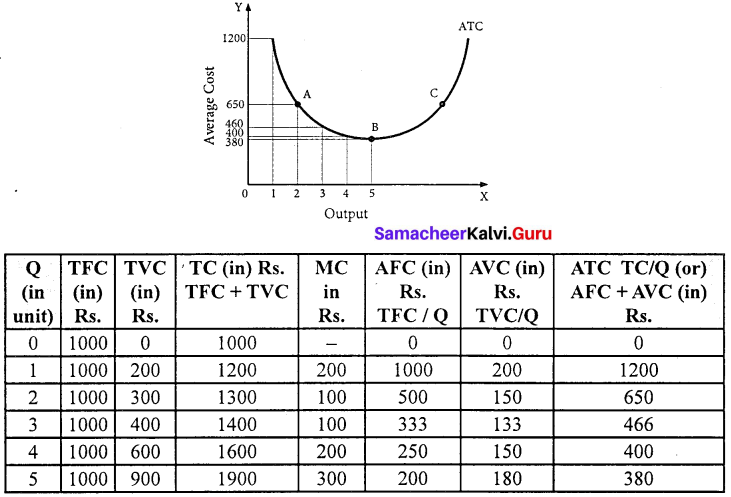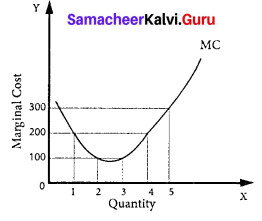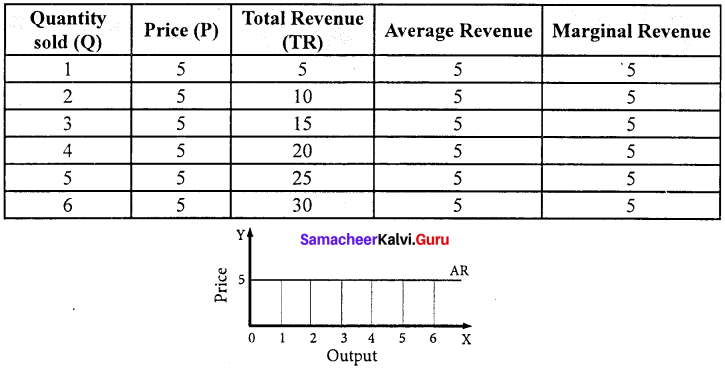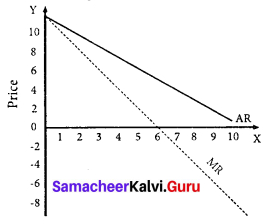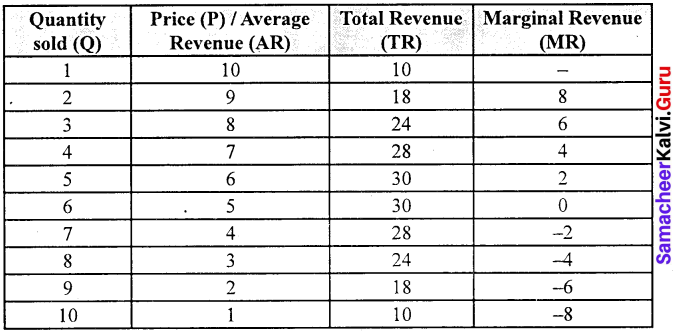Samacheer Kalvi 11th Commerce Solutions Chapter 18 Business Ethics and Corporate Governance
Students can Download Commerce Chapter 18 Business Ethics and Corporate Governance Questions and Answers, Notes Pdf, Samacheer Kalvi 11th Commerce Book Solutions Guide Pdf helps you to revise the complete Tamilnadu State Board New Syllabus and score more marks in your examinations.
Samacheer Kalvi 11th Commerce Solutions Chapter 18 Business Ethics and Corporate Governance
Samacheer Kalvi 11th Commerce Business Ethics and Corporate Governance Textbook Exercise Questions and Answers
I. Choose the Correct Answer
Question 1.
Which of the following helps in maximising sale of goods to society?
(a) Business success
(b) laws and regulations
(c) Ethics
(d) Professional management
Answer:
(c) Ethics
Question 2.
Ethics is important for …………….
(a) Top management
(b) Middle level managers
(c) Non – managerial employees
(d) All of them
Answer:
(d) All of them
![]()
Question 3.
Which of the following does not ensure effective ethical practices in a business enterprise?
(a) Publication of a code
(b) Involvement of employees
(c) Establishment of compliance mechanisms
(d) none of them
Answer:
(a) Publication of a code
Question 4.
The role of top management is to guide the entire organisation towards …………….
(a) General behaviour
(b) Organisation behaviour
(c) Ethically upright behaviour
(d) Individual behaviour
Answer:
(c) Ethically upright behaviour
Question 5.
The ethical conduct of employees leading to standard practices results in …………….
(a) Good behaviour
(b) Bad behaviour
(c) Ethical behaviour
(d) Correct decision making
Answer:
(d) Correct decision making
II. Very Short Answer Questions
Question 1.
What is ethics?
Answer:
Business ethics are the business morality generally results from an individual’s own moral standards in the context of the political and cultural environment in which the organization is operating. Ethics and profits go together in the long run. It enhances the quality of life, standard of living and business.
Question 2.
What do you mean by code?
Answer:
The organization principles are defined in the written document called code.
Question 3.
State two ways by which ethics influences behaviour.
Answer:
Ethical behaviour is the act consistent with the moral standards or codes of conduct established by society.
![]()
Question 4.
What is the need for Corporate Governance?
Answer:
Corporate Governance is the system by which businesses are directed and controlled in the best interests of all stakeholders. Good corporate governance enables corporate success and economic development.
Question 5.
What are MNCs?
Answer:
A Multinational Corporation is an organization doing business in more than one country. It is defined as an enterprise operating in several countries but managed from one country.
III. Short Answer Questions
Question 1.
Define business ethics.
Answer:
Business ethìcs may be defined as “ A set of moral standards to be followed by owners, managers and business people”.In the words of Kilcullen and Kooistra (1999), Business Ethics is “ the degree of moral obligation that may be ascribed to corporations beyond simple obedience to the laws of the state”.
Question 2.
What do you mean by the concept of business ethics?
Answer:
Business exists to supply goods and services to the people from a social point of view but from an individual point of view, the primary objective of any business unit is to make a profit. The individual objective should not be in conflict with the societal objectives. These two objectives normally contradict each other, as one business enterprise may be good in an individual objectives and bad at social objectives and vice versa.
![]()
Question 3.
Why is ethics necessary in business?
Answer:
All business units have realized that ethics is vitally important for the existence and progress of the business as well as the society. It is very important as it improves the public image, earns public confidence, and leads to greater success. Ethics and profits go together in the long run. It enhances the quality of life, the standard of living, and business.
Question 4.
What are the benefits of Corporate Governance to Shareholders?
Answer:
- Good corporate governance enables corporate success and economic development.
- Ensures stable growth of organizations.
- Aligns the interests of various stakeholders.
- Improves investor’s confidence and enables raising of capital.
- Reduces the cost of capital for companies.
- Has a positive impact on the share price.
Question 5.
Illustrate with an example the working of an MNC.
Answer:
Any company is referred to as a Multinational company or corporation (MNC) when that company manages its operation or production or service delivery from more than a single country. It has its headquarters based in one country with several other operating branches in different other countries.
The country where the headquarter is located is called the home country whereas; the other countries with operational branches are called the host countries. Example McDonald’s an American food company has its head office in California, the United States has 69 million customers in over 100 countries.
IV. Long Answer Questions
Question 1.
Explain the different key elements of business ethics.
Answer:
Some of the basic elements of business ethics while running a business enterprise are:
Top Management Commitment:
The top management has a very important role to guide the entire organization towards ethical behaviour. The top-level personnel in any organisation should work openly and strongly committed towards ethical conduct and guide people working at middle and low level to follow ethical behaviour.
Publication of a “Code”:
Generally, organisations formulate their own ethical codes for the conduct of the enterprise; it should be followed by the employees of the organisation. The organisation principles are defined in the written document called code. The code of conduct covers various areas such as health and safety in the workplace, fair dealing in selling and marketing activities, ethical practices in the business, etc.
Establishment of Compliance Mechanism:
To make sure that actual decisions match with a firm’s ethical standards, suitable mechanisms should be established. Any organisation following ethical codes in training, recruitment, selection, etc., is sure to be profitable. The organisation must provide for an environment where the employees are to free to report about matters of unethical behaviour.
Involving Employees at All Levels:
It is the employees at different levels who implement ethics policies to make the ethical business a reality. Therefore, their involvement in ethics programmes becomes a must. For example a small group of employees can be formed tö discuss the important ethics policies of firms and examine the attitudes of employees towards these policies.
Measuring Results:
The organisations from time to time keep a check on the ethical practices followed. Although it is difficult to accurately measure the end results of ethics programs, the firms can certainly audit to monitor compliance with ethical standards. The top management team and other employees should then discuss the results for further course of action.
![]()
Question 2.
Describe the code of business ethics.
Answer:
Code of ethics documents the generally accepted principles of ethical conduct. They are statements of values and principles which define the purpose of an organisation. It gives a clear picture of the standards that employees should follow. It guides them in decision making. The code of business ethics can include the following:
- To offer goods at fair prices.
- To supply goods of good quality and not to deal in spurious and sub-standard products.
- To listen to consumer’s complaints and to reduce them.
- Not to raise the price of its products unjustifiably.
- Not to resort to hoarding and lack marketing.
- Not to resort to price-cutting with the sole aim of killing competition.
- Not to issue advertisement containing false information or exaggerated claims.
- To pay fair wages to its employees and not to exploit them.
- To provide a congenial work atmosphere.
- To design the production process in such a way as to reduce environmental pollution.
- To keep proper books of accounts and records.
- To pay taxes regularly.
- To complain about various business losses and never to flout Government regulations.
Question 3.
Explain the significance of Corporate Governance from the point of Stakeholders.
Answer:
- Good corporate governance corporate success and development.
- Ensures stable growth of organizations.
- Aligns the interests of various stakeholders.
- Improves investors’ confidence and enables raising of capital.
- Reduces the cost of capital for companies and ensures the efficient allocation of resources. .
- Has a positive impact on the share price
- Provides incentives to managers to achieve organizational objectives.
- Eliminates waste, corruption, risks, and mismanagement.
- Improves the image of the company and creates a strong brand as an ethical business.
- The organization is managed to benefit the stakeholders.
Question 4.
Discuss the role of International Benchmarking on the working of Companies in India.
Answer:
- Asia: Independent Directors are a requirement for listed companies in all Asian economies, where most require at least 1/3rd of the Board to be independent.
- USA: The Council of Institutional Investors (CII), Corporate Governance Policies state that at least 2/3rd of the directors should be independent.
- Europe: European Commission urges member states to have a sufficient number of independent non-executive or supervisory directors on Board.
- G20 / OECD: The latest principles encourage the prominent role of independent Board members.
- Japan: In early 2014, the Japanese Prime Minister announced the goal of increasing the percentage of women in executive positions at Japanese companies to 30% by 2020.
- UK: UK businesses had voluntary targets first set in 2011 i.e. to have 25% women on FTSE 100 (The Financial Times Stock Exchange) Boards by 2015.
- Canada: At the Federal level, two bills are currently being tabled which will impose a 40% quota for female Board members of public companies and other regulated entities such as banks and insurance companies.
- Brazil: A bill pending in the Brazilian Senate would impose a 40% female quota on the Boards of state-owned enterprises by 2022.
- France: French parliament adopted a bill that requires public companies making at least 50 million Euros in turnover and employing more than 500 workers to have 40% female Board representation by 2017.
![]()
Question 5.
Describe the benefits of increasing the number of MNCs.
Answer:
The reasons for so many MNC’s in Indian are as follows:
- India has a huge market
- It is one of the fastest-growing economies in the world.
- Favorable policies of the government towards FDI.
- Financial liberalization of the country after 1991.
- The government encourages and makes continuous efforts to attract. foreign investment by relaxing policies.
- The entry of MNC’s into India has proved quite beneficial for the growth and development of the Indian economy providing employment opportunities for the young generation.
Samacheer Kalvi 11th Commerce Business Ethics and Corporate Governance Additional Questions and Answers
I. Choose the Correct Answer:
Question 1.
Ethics governs the ……………..
(a) Behaviour
(b) Ethos
(c) Life
(d) Payoffs
Answer:
(a) Behaviour
Question 2.
The organisation principles are defined in the written document called ……………..
(a) Code
(b) Law
(c) Behaviour
(d) Ethical
Answer:
(a) Code
![]()
Question 3.
…………….. has its Headquarters based in one country with several other operating branches in different other countries.
(a) MNC
(b) GDP
(c) Company
(d) Business
Answer:
(a) MNC
Question 4.
There are …………….. primary types of bench making.
(a) Two
(b) Three
(c) Four
(d) Five
Answer:
(c) Four
Question 5.
…………….. bench making is a direct competitor-to-competitor comparison of a product, service process, or method.
(a) Internal
(b) Competitive
(c) Functional
(d) Generic
Answer:
(b) Competitive
Future Learning
Question a.
Money earning cannot be the sole objective of business or life.
Answer:
The primary objective is to make a profit. The individual objective should not be with societal objectives.
![]()
Question b.
The mind of students to accept that ethics and consideration for the environment, law, etc can lengthen the income-earning of an individual or business.
Answer:
All business units have realized that ethics is vitally important for the existence and progress of the business as well as the society. Ethics and profits go together in the long run. It enhances the quality of life, the standard of living, and business.
